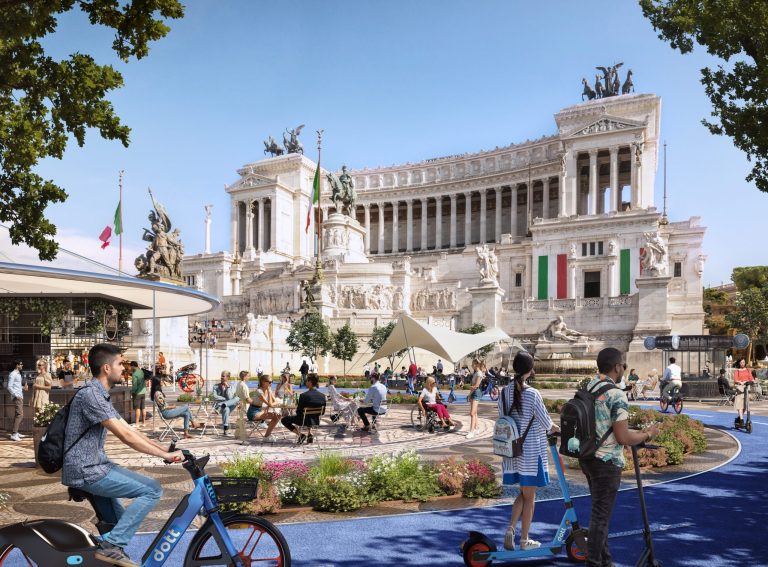Entrepreneurs are being increasingly encouraged to accelerate their thinking on the topic of M&A given the scarcity in early-stage and growth-stage funding over the last couple of years, coupled with the fact that investors are wanting to progressively receive returns.
Market consolidation in selected mobility segments, including shared mobility, aggregation platforms, and micromobility has undoubtedly been a key theme since the beginning of 2024, and I expect that trend to accelerate even more over the coming months and years.
I often get asked by mobility entrepreneurs or their shareholders about potential strategic alternatives for their businesses and so felt the time had come to share my take on the various credible routes.
The “dream” route: sale to one of the new mobility or tech giants
Most mobility entrepreneurs will probably admit that exiting their business to one of the global mobility or tech giants such as Uber, Lyft, Bolt, Google, Amazon or Siemens would be their dream scenario. Not only would this make them rich, but it would also make their CV’s look good if they manage to convince one of those giants they had built a business that they would struggle to build on their own.
However, there is a catch…most of those large players have consistently preferred to hire extended teams, hence making the bar for M&A extremely high. Stories which look good on a pitch deck to potential investors rarely materialise in real life!
Past examples include the sales of Careem to Uber and PBSC to Lyft.
The “independence” route: sale of a majority stake to a private equity firm
Entrepreneurs running a profitable business are offered the luxury to continue developing independently with the support of a financial investor. While these buyout transactions are traditionally marketed as “partnerships”, they typically involve the private equity firm acquiring a majority stake from legacy shareholders.
Entrepreneurs are often encouraged to roll over a portion of their shares for a few more years. The financial sponsor also typically injects additional capital to either accelerate a pre-defined growth strategy (e.g. new geographies, new products etc.) or buy smaller complementary competitors.
Recent examples include the sales of Nextbike to Star Capital and Cyclobility to Down2Earth Capital.
The “shared vision” route: sale to a larger competitor
Even after having reached profitability, achieving sufficient scale is not always an easy road. This is why M&A often takes place between players in a similar mobility segment where one has built a leadership position (aka the category winner) and the other has successfully found its niche (aka the challenger). The strategic rationale for such a transaction relates to a desire to acquire a complementary technology or user base, and expand by geography, product or target client type.
While egos have often been an obstacle to many more transactions taking place, entrepreneurs progressively realise that joining a bigger firm will help them realise their vision, while still often keeping a certain level of autonomy.
Past examples include the sales of OuiCar to Turo and Citymapper to Via.
The “relationship” route: sale to an existing commercial partner
Banks and insurance firms are often perceived as obvious buyers of many mobility businesses, but despite their ambitions, they have historically favoured strategic investments in exchange for a minority stake, or sometimes chosen to limit their involvement to a close commercial partnership. With new financing modes becoming mainstream and insurance options needing centralisation, there should be several strategic reasons for more transactions.
Transport operators could also play an active role in the ongoing consolidation. This would require both domestic and global operators to shift away from a mindset centred around traditional public transportation towards a vision where the end user experience becomes the priority. With local transport authorities increasingly keen to consolidate their vendor relationships, operators should ideally add more services to their solution offerings.
Past examples include the sales of Hiflow to Credit Agricole and Mappy to RATP.
The “mirage” route: sale to a large automotive industry player
Car makers in various parts of the world have historically been considered as the most obvious buyers of emerging mobility services players. They had all been very vocal about their plans to diversify their revenue streams with clear ambitions to be seen as more than just selling cars. Topics related to leasing, subscription, sharing, renting were seen as ways for them to accept the transition towards car ownership being replaced.
Unfortunately, recent macro-economic conditions and accelerated electrification shifts forced them to reconsider and killed a lot of consolidation discussions. It is also worth recognising that integrations of acquired mobility services players within those large organisations were very rarely successful.
Past examples include the sales of Bipi to Renault Mobilize and Share Now to Stellantis.











